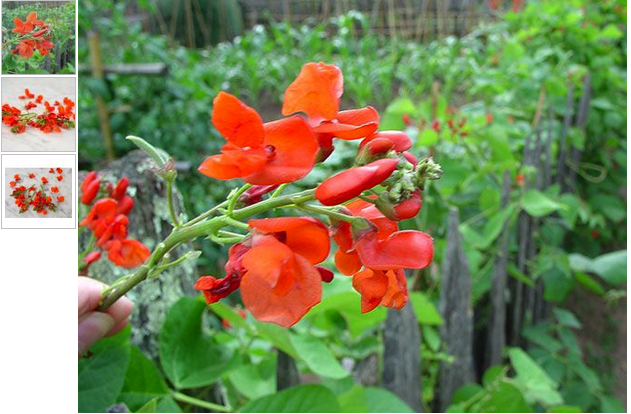Even though it is still so cold and wet, Spring is arriving. Our person-to-person plant sale will be happening shortly and gardening will be more fun with a bit of warmth.
Beyond what we can exchange with our fellow DGC members, what kind of plants might we want to add? Are people wondering about food shortages and whether it’s time to order raised bed frames for new veggies? The first is a definite concern and latter is a real “maybe” for small Marblehead plots. Perhaps there is a solution in planting perennial vegetables that can also give us interesting landscapes.
What is a perennial vegetable, you ask? A classic example would be asparagus. I’ve tried to grow asparagus in my space but it didn’t take well at all. Luckily, there are several others to consider. Scarlet Runner Beans are a great example as well as the Walking Onion, Sea Kale, Wall-Rocket, Welsh Onion, and Sorrel. Varieties of Cress are perennial, most of which do not require bogs or ponds to survive.
Perennial crops have become a rapidly growing focus for ecological gardening and agriculture. The purpose for replacing annual crops with perennials is soil health and fertility retention — the less soil is forked and disturbed, the more the natural and beneficial organisms can function to improve outcomes. English gardeners are particularly interested in this at a personal level but increasingly our farms are starting to realize that it is more cost effective to reduce the soil disturbance.
I read about this a couple years ago and didn’t think it was more than an interesting theory until last year when I went morel mushroom picking with my dairy farmer friends. I had noticed that John had tilled one field down by the main road and planted his cattle corn but then other fields did not look tilled. As we walked between one overgrown old fieldstone woods to another across one of the untilled corn fields I asked if he was going to let this one go fallow. “Oh, no, it’s planted — see the little shoots coming up from the holes?” Sure enough, there were lines in the dirt with puncture holes. I got a gentle education — saves on gasoline (one pass through the field rather than at least 2), reduces the number and types of equipment needed ($$ saved), lowers the fertilizer needs (another set of passes and $$ resources), allows the soil to rest and use its own biology to help seedlings (carbon fixing), and keeps dust and weeds to a minimum.
So here’s the challenge — how about Scarlet Runner Beans? They grow tall up a fence, have lovely red flowers, are perenniel, and quite tasty as both new green and dried mature beans that prefer the cool climate we offer here. https://www.rareseeds.com/store/vegetables/beans/runner-beans/scarlet-runner-bean

Or perhaps you like Kale? There are several varieties of perenniel kale that can add color and function to our gardens. https://store.experimentalfarmnetwork.org/collections/perennial-vegetables/products/kaleidescope-perennial-kale-grex

The list goes on — Egyptian Walking Onion, Garlic Cress, Sorrel, Groundnut (definite Native), Wall-Rocket, Skirret, Good King Henry (a perennial spinach), and others. Some of these are carried by Burpee and other commercial growers but most are in the Rare category and need a bit of searching to find. Unfortunately, most of this kind of seed are located on UK sites but there are plenty in the US to handle our interests.
If people are interested in combining efforts (how many seeds does one small garden need), perhaps we can pool resources on ordering a few seed packets.
Happy Gardening and Stay Safe
Pal


This is great! Thanks, Pal!
Jo Ann Augeri Silva Sent from my iPad
>
LikeLike
What an interesting article! I just love the idea of growing perrenial vegetables. Nice job Pal!
LikeLike
Another edible perennial is rhubarb. Very versatile; I chop and freeze what I don’t use during its growing season. Use it for quick bread, pies, sauces, and smoothies.
LikeLike